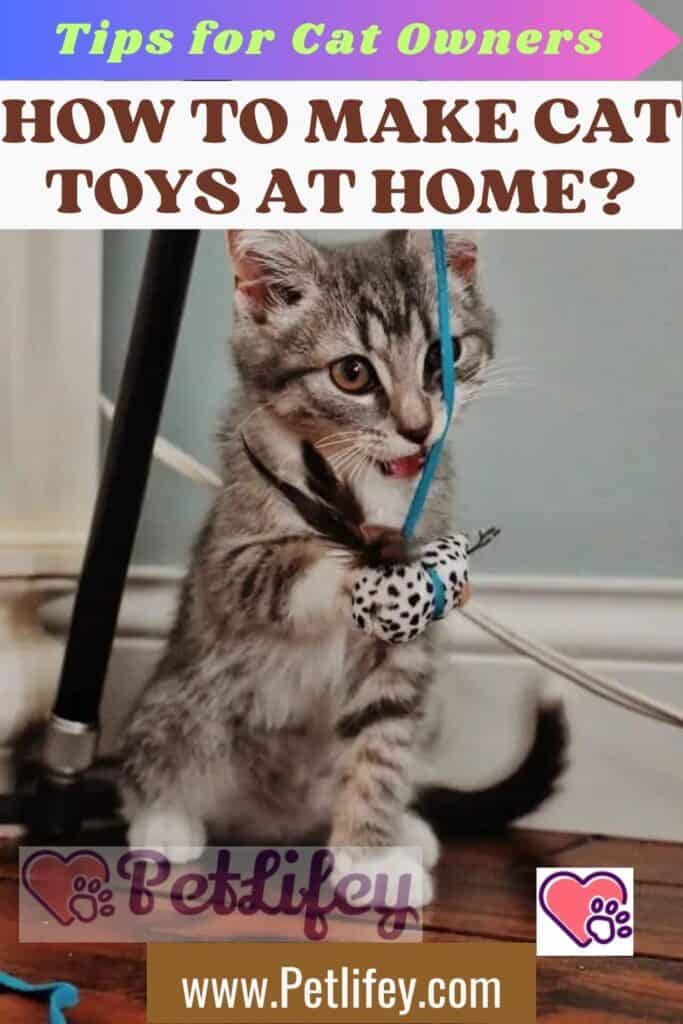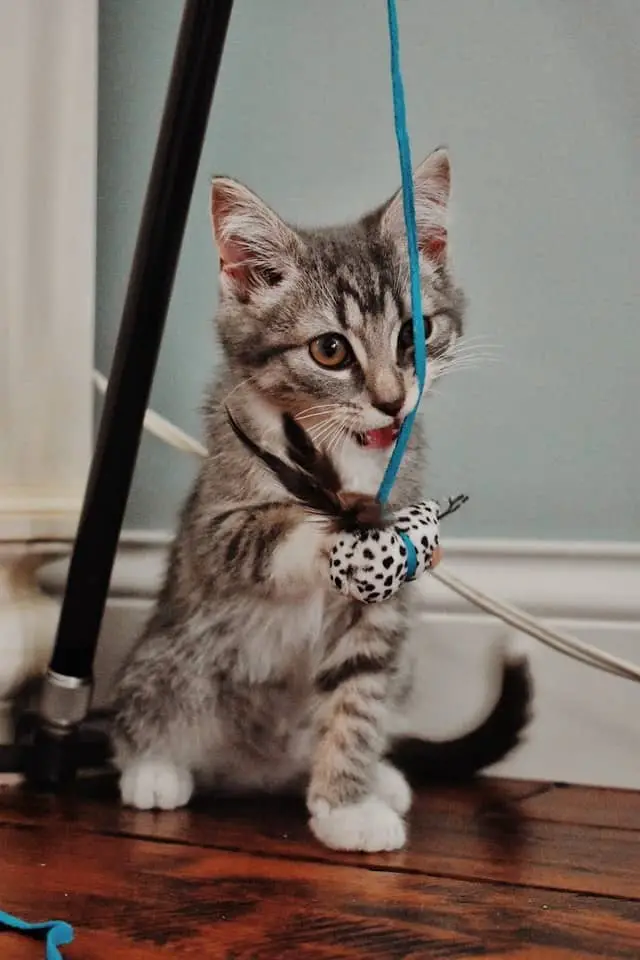
Felines need new toys every so often to mimic their hunting behaviour and stay healthy and happy.
Did you know that cats mimic your hunting techniques during play? And that they need to play at least half an hour a day? The game is important for cats as it reduces the risk of developing overweight and with it, to suffer diabetes- and stimulates their intelligence, two essential keys to ensuring the physical and psychological wellbeing of the Pussycats. For this, these animals have to have toys, and also have them renewed from time to time. In this article you will learn how to make homemade toys for cats in a fun and very simple way with the help of a sock and catnip grass, with a shredded T-shirt and even with toilet paper rolls.
The cats need to play not only to avoid being overweight dangerous and diseases arising from it, such as feline diabetes, but to stimulate your mind and keep your mental wellbeing. “Cats need at least 30 minutes of daily play with their humans: an activity that helps them stay fit and prevent overweight”.
For them, the game has many similarities with their natural hunting activity. Their postures, times to design the strategy and stalking are movements and positions that cats also reproduce during their games. And toys are their “prey.” This explains why felines need to have new toys from time to time. Thus their “new prey” are more attractive. But how to make cat toys at home? Here are five ideas.
1. Homemade cat toy: catnip-filled sock
Feline toys can be made from clean socks. This homemade cat toy is made with a sock. And its appeal does not end there, as its interior is filled with catnip grass, a vegetable that harmlessly stimulates two out of three felines . “Cats love catnip; this plant has a harmless and temporary narcotic effect on them, which makes them run, jump and scratch in places they have never used”.
- Why do cats love catnip weed?
The catnip must be left inside the sewn sock. And it only remains to sew a rope to play. Fun and very simple! An important tip? Put the toy away at the end of the play session – prolonged exposure to catnip can make kitties immune to its entertaining effects!
2. Cardboard cat toys
Making homemade toys for cats with the toilet paper roll is very simple. If the roll is cut into strips about two centimeters wide and shaped into a ring, there will be many cheap toys for the felines in the house.
Toilet paper rolls can also be used to create clever cat food puzzles. This idea will provide you with hours of entertainment.
Before building the following puzzle for felines, you need to accumulate about 15 rolls of toilet paper and get a cardboard box, more or less rigid. The rolls are embedded inside the box: if they are enough, they will be held under the pressure of one another. The box can remain upright, attached to the leg of a piece of furniture, with the help of a pair of knotted ropes running through it. It only remains to introduce different prizes in the rolls. Some may bring food; others, a toy; and those that remain, remain empty to arouse the interest of the animal.
3. Homemade cat toy: a ball made from a T-shirt
This homemade cat toy is very ingenious. The proposal consists of making strips an old t-shirt (literal), leaving about two centimeters on each side and then cutting it in a zigzag. When the shirt is opened the result is a huge and unique strip of fabric with which you can create a nice ball. It is important to tie it well, in the shape of a ball, so that it is not dangerous for cats, or swallowed. It was easy, right?
4. Homemade insects for cats made with fabric
A sweatpants can stretch even more, when it comes to make toys for cats. The idea is to create insects to play with! To make them, the trimmed strips of fabric must be reused. You just have to choose five or six strips, knot them and … ready to hit and go!
5. House mice for cats
The mouse is one of the most repeated protagonists among feline accessories. And how easy it is to make toy mice for cats at home !
The necessary material is: a piece of felt, sewing thread, cardboard and a string to create the rodent’s tail. And the procedure, simple. The first step is to build a teardrop-shaped template out of cardboard. This meld is transferred twice to the felt, traced with a pen, and cut out. The second step is to sew the two felt tears, taking care to leave the thinner end free. A piece of cardboard will be used to build a funnel through which to introduce seeds into the joined fabrics, at the not yet sewn end, so that the toy mouse becomes thick. The last step is to insert part of the rope through the free hole – it will be the tail of the toy mouse – and sew it all together so that it is attached. Ready!







